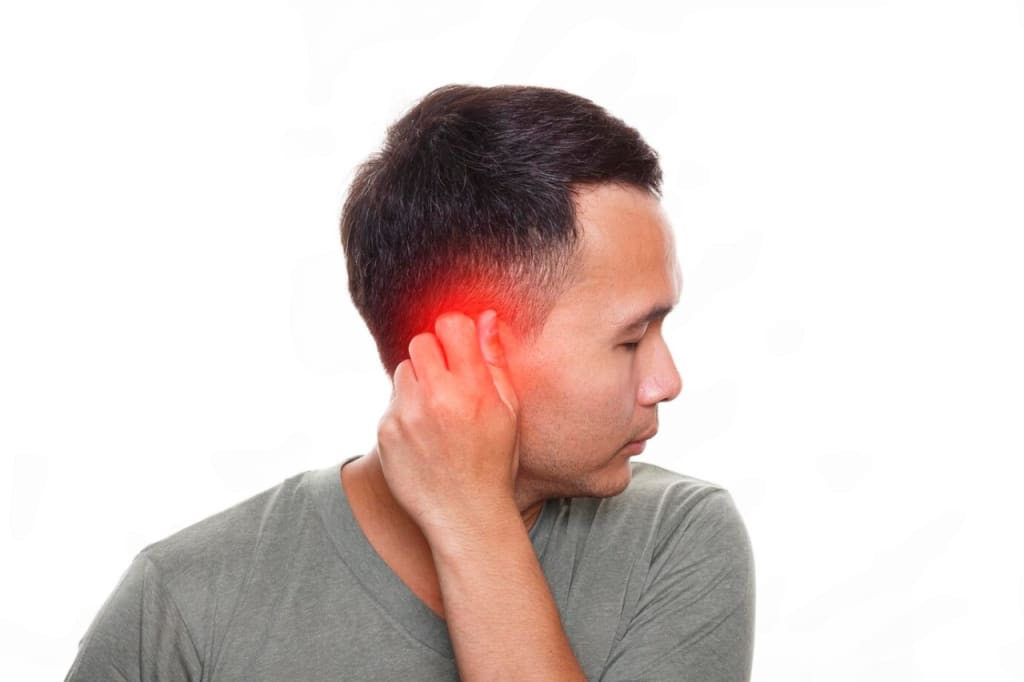When you face a sports injury, you might wonder how to maximize your recovery effectively. It's vital to understand the immediate steps you should take, alongside the long-term strategies that can support your healing journey. From the RICE method to tailored rehabilitation programs, there's a lot to reflect on. Plus, addressing nutrition and mental health can greatly influence your recovery. If you're looking to bounce back stronger, you'll want to explore some essential resources and techniques that could make all the difference in your return to peak performance. What are the first steps you should take?
Understanding Common Sports Injuries
When you think about sports injuries, it's essential to recognize the most common types that athletes often face. Understanding these injuries can help you identify symptoms early and take the right steps for recovery.
One of the most frequent injuries is a sprain, which occurs when ligaments stretch or tear. This often happens in sports that involve quick changes of direction, like basketball or soccer. You might feel pain, swelling, or instability in the affected area.
Another common issue is a strain, where muscles or tendons get stretched or torn. This can occur from overexertion or sudden movements, and you may experience muscle spasms or tenderness.
Fractures are also prevalent, especially among athletes who engage in high-impact sports. A fracture might result from a fall, collision, or excessive force. You'll likely notice immediate pain and swelling, and you might find it hard to use the affected limb.
Tendonitis is another injury you should be aware of. It's an inflammation of a tendon, often caused by repetitive motion, and you might feel persistent pain in the affected area.
Lastly, concussions are serious injuries that can happen in contact sports. If you experience confusion, dizziness, or headaches after a hit, it's important to seek medical attention.
Importance of Immediate Care
Recognizing the importance of immediate care after a sports injury can greatly influence your recovery process. When you sustain an injury, the actions you take in those first moments can set the tone for how well and how quickly you heal. Immediate care can help minimize pain, reduce swelling, and prevent further damage to your body.
First and foremost, applying the RICE method—Rest, Ice, Compression, and Elevation—can be essential. Resting the injured area prevents additional strain, while ice helps alleviate swelling and pain. Compression using a bandage can offer support, and elevating the injured limb can further reduce swelling. Taking these steps right away can greatly impact your recovery timeline.
Moreover, seeking professional medical attention soon after the injury is critical. A healthcare provider can assess the situation accurately, ensuring you receive the proper diagnosis and treatment. Delaying treatment can lead to complications or even chronic issues down the line, which can sideline you longer than necessary.
Additionally, addressing injuries promptly can provide peace of mind. Knowing that you're taking the right steps to care for your body can alleviate anxiety about your performance and future activities. It's not just about getting back to the game; it's about ensuring your long-term health.
Rehabilitation Techniques and Protocols
Rehabilitation techniques and protocols play an essential role in your recovery journey after a sports injury. They're designed to help you regain strength, flexibility, and function, guaranteeing you get back to your best as quickly and safely as possible.
Adhering to a structured rehab plan not only accelerates recovery but also minimizes the risk of re-injury.
Here are some key components of effective rehabilitation protocols:
- Assessment: Start with a thorough evaluation by a healthcare professional to identify specific needs and limitations.
- Stretching: Incorporate flexibility exercises to maintain and improve range of motion, which can be critical for a full recovery.
- Strengthening: Focus on targeted strength training to rebuild muscles that may have weakened during your injury.
- Functional Training: Gradually reintroduce movements relevant to your sport to guarantee you're prepared for the physical demands you'll face.
- Pain Management: Use techniques like ice therapy, ultrasound, or electrical stimulation to manage pain and inflammation during the recovery process.
It's essential to communicate with your rehabilitation team throughout this journey. They'll guide you through the appropriate techniques based on your specific injury and progress.
Nutrition for Optimal Recovery
Nutrition plays an essential role in your recovery from sports injuries, and getting it right can greatly enhance your healing process. After an injury, your body needs specific nutrients to repair tissues, reduce inflammation, and restore strength. Focus on a balanced diet rich in proteins, carbohydrates, healthy fats, vitamins, and minerals.
Start by incorporating lean proteins like chicken, fish, eggs, and legumes into your meals. These foods provide the amino acids necessary for muscle repair and rebuilding. Pair your proteins with complex carbohydrates such as whole grains, fruits, and vegetables to fuel your energy needs and support overall health.
Don't forget to include healthy fats from sources like avocados, nuts, and olive oil, which can help reduce inflammation. Stay hydrated, too. Water is essential for ideal recovery, as it aids in nutrient transport and waste removal from your body. Aim for at least eight to ten glasses of water daily, and consider electrolyte-replenishing drinks if you're engaging in physical therapy or light exercises.
Additionally, certain nutrients play specialized roles in recovery. For example, omega-3 fatty acids, found in fish and flaxseeds, can help decrease inflammation. Vitamins C and E, found in citrus fruits and nuts, respectively, are critical for collagen synthesis and tissue repair.
Ultimately, a well-rounded diet can provide your body with the tools it needs to recover effectively. Prioritize your nutrition during this important phase, and you'll set yourself up for a smoother, quicker return to sports.
Mental Health and Motivation
Maintaining a positive mindset is crucial during your recovery from sports injuries, as it can significantly influence your healing process. When you're sidelined, it's easy to feel frustrated or discouraged.
However, focusing on your mental health can make a considerable difference in how quickly and effectively you recover. Here are some strategies to help you stay motivated:
- Set realistic goals: Break your recovery into manageable milestones. Celebrate each achievement, no matter how small.
- Surround yourself with support: Lean on friends, family, or teammates. Their encouragement can help lift your spirits during tough times.
- Practice mindfulness: Engage in meditation or deep breathing exercises. These practices can help reduce stress and improve your overall outlook.
- Stay engaged with your sport: Watch games, read about your sport, or even participate in light training if possible. Keeping your passion alive can provide motivation.
- Visualize success: Imagine yourself back in action, performing at your best. Visualization can boost your confidence and reinforce your commitment to recovery.
Incorporating these practices can create a more positive emotional environment for healing.
Remember, your mindset plays a crucial role in the recovery process. By prioritizing mental health and motivation, you can enhance your physical recovery, making it easier to return to the sport you love.
Stay focused, be patient with yourself, and trust that your hard work will pay off.
Local Resources and Facilities
When you're recovering from a sports injury, finding the right local resources can make a big difference.
Look for rehabilitation centers and sports therapy providers in your area that specialize in your specific needs.
These facilities often offer tailored programs that can help speed up your recovery process.
Available Rehabilitation Centers
Finding the right rehabilitation center is essential for your recovery from sports injuries, as local resources can greatly influence your healing process.
In Eagle, you have access to several rehabilitation centers equipped to help you regain your strength and mobility. Choosing the right facility can make a significant difference in your recovery journey.
Here are some factors to take into account when selecting a rehabilitation center:
- Qualified Staff: Look for centers with experienced and certified professionals who specialize in sports injuries.
- Personalized Programs: Verify they offer tailored rehabilitation programs to meet your specific needs.
- Advanced Equipment: Check if they've modern equipment that can aid in your recovery.
- Positive Reviews: Research feedback from previous patients to gauge the center's effectiveness and success rates.
- Convenient Location: Choose a facility that's easily accessible to guarantee you can attend your sessions regularly.
Sports Therapy Providers
Considering your recovery needs, exploring local sports therapy providers can greatly enhance your rehabilitation process. In Eagle, several facilities specialize in sports therapy, offering tailored treatments to help you recover effectively from your injuries.
Look for providers that have experience working with athletes, as they understand the unique demands of sports-related injuries. These professionals often use a combination of manual therapy, exercise programs, and modalities like ultrasound or electrical stimulation to promote healing.
You'll find that many local clinics also feature state-of-the-art equipment and technology, which can further aid your recovery. Don't hesitate to ask about their success stories or patient testimonials; this can give you insight into their effectiveness.
Additionally, consider the convenience of location and availability of appointments when choosing a provider. Many clinics offer flexible scheduling, including evening and weekend hours, making it easier for you to fit therapy into your routine.
Finally, remember to communicate openly with your therapist about your goals and concerns. This collaboration will help you stay motivated and on track towards a successful recovery.
Tips for Preventing Future Injuries
To prevent future injuries, you need to focus on proper warm-up techniques and incorporate strengthening exercises into your routine.
Warming up prepares your muscles and joints for activity, reducing the risk of strain.
Regular strength training not only enhances performance but also stabilizes your body, making you less prone to injuries.
Proper Warm-Up Techniques
Warm-ups aren't just a formality; they're essential for preparing your body for physical activity and preventing injuries. When you warm up properly, you increase blood flow to your muscles, enhance flexibility, and improve overall performance.
Here are some key techniques to incorporate into your warm-up routine:
- Dynamic Stretching: Focus on movements that mimic the activity you'll be doing, like leg swings or arm circles.
- Gradual Increase in Intensity: Start with low-intensity exercises, gradually ramping up to your sport-specific movements.
- Joint Mobility Exercises: Include movements that target major joints, such as ankle rolls and hip circles, to guarantee they're ready for action.
- Sport-Specific Drills: Engage in light practice relevant to your sport, helping your body adjust to the upcoming demands.
- Mind-Muscle Connection: Pay attention to how your body feels during the warm-up to enhance focus and prepare mentally.
Strengthening Exercises Regularly
Incorporating regular strengthening exercises into your routine is fundamental for preventing future injuries. When you target the muscles that support your joints, you enhance stability and reduce the risk of strains and sprains. Focus on exercises that strengthen major muscle groups, especially those used in your sport.
Start with bodyweight exercises like squats, lunges, and push-ups. As you progress, consider adding resistance bands or weights to challenge yourself further. Aim for at least two to three sessions per week, allowing for recovery time in between.
Don't forget to include exercises that improve core strength, as a strong core supports overall body mechanics. Planks, bridges, and rotational movements can greatly enhance your performance and injury prevention.
Listening to your body is essential. If you experience pain during any exercise, stop immediately and reassess your form or modify the movement. It's better to take a step back than risk further injury.
Lastly, always complement strengthening with flexibility training. Stretching helps maintain your range of motion, which is crucial for all athletes.
Conclusion
In Eagle, maximizing your recovery from sports injuries means taking a holistic approach. By understanding your injury and seeking immediate care, you set a strong foundation for healing. Embrace tailored rehabilitation techniques, fuel your body with proper nutrition, and don't overlook your mental health. Engage with local resources and stay connected with your community for support. Remember, setting realistic goals will keep you motivated and ultimately help you return to your sport stronger than ever.



